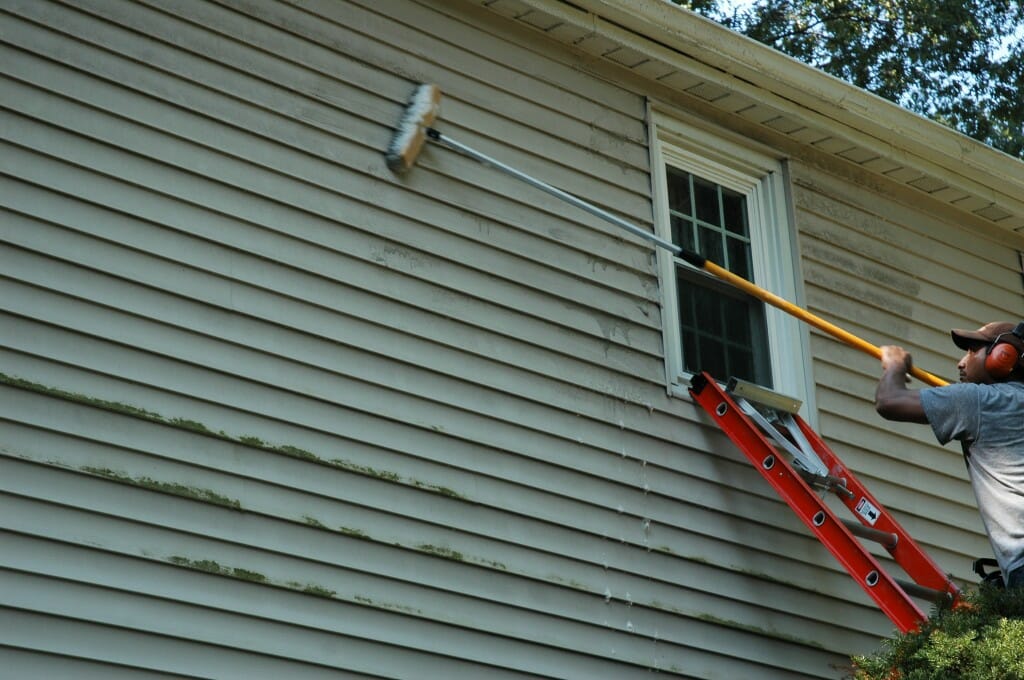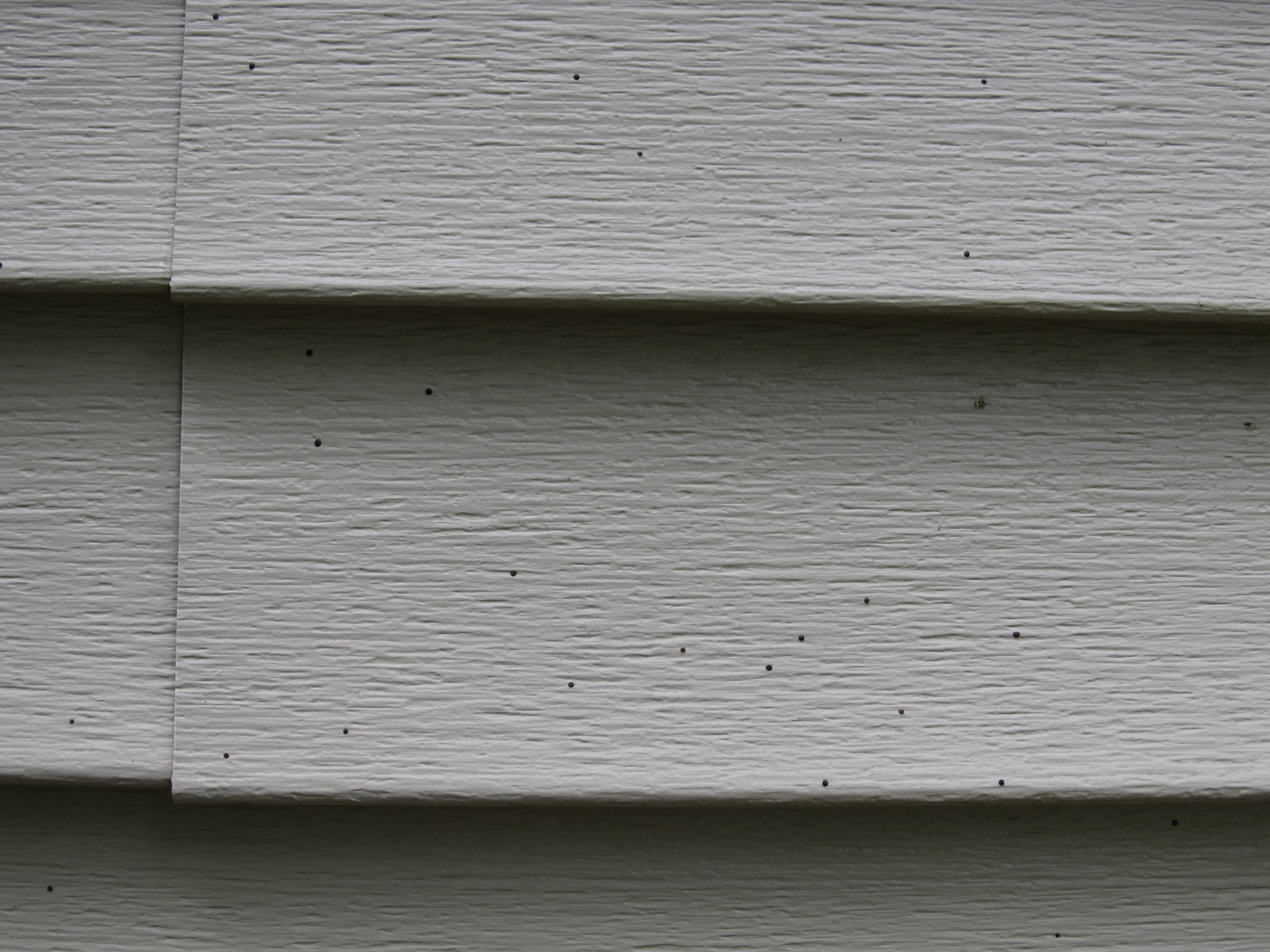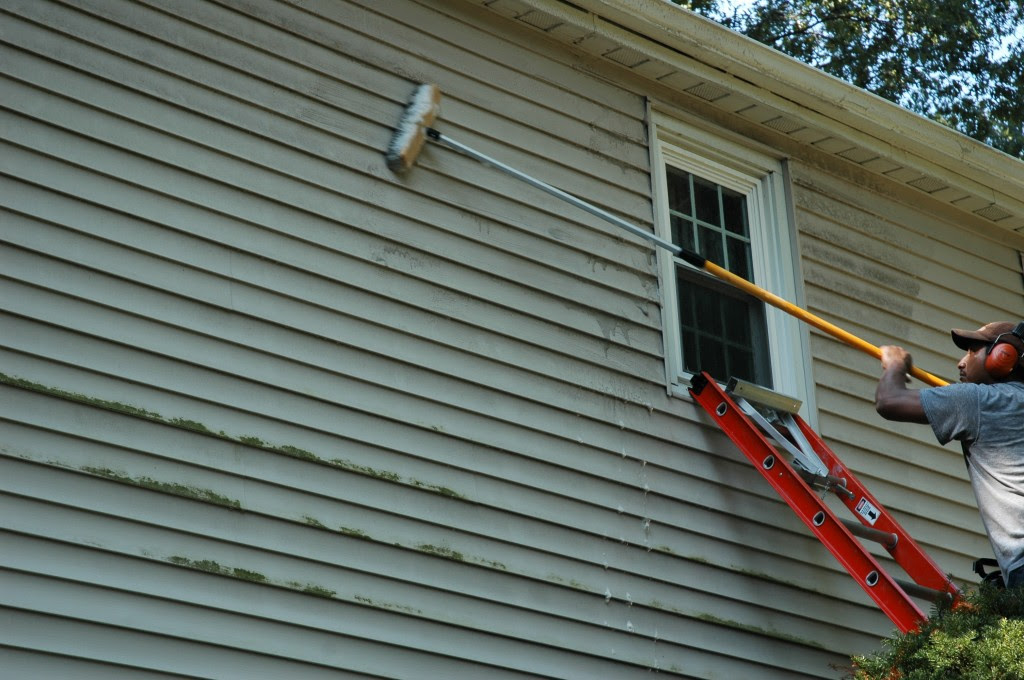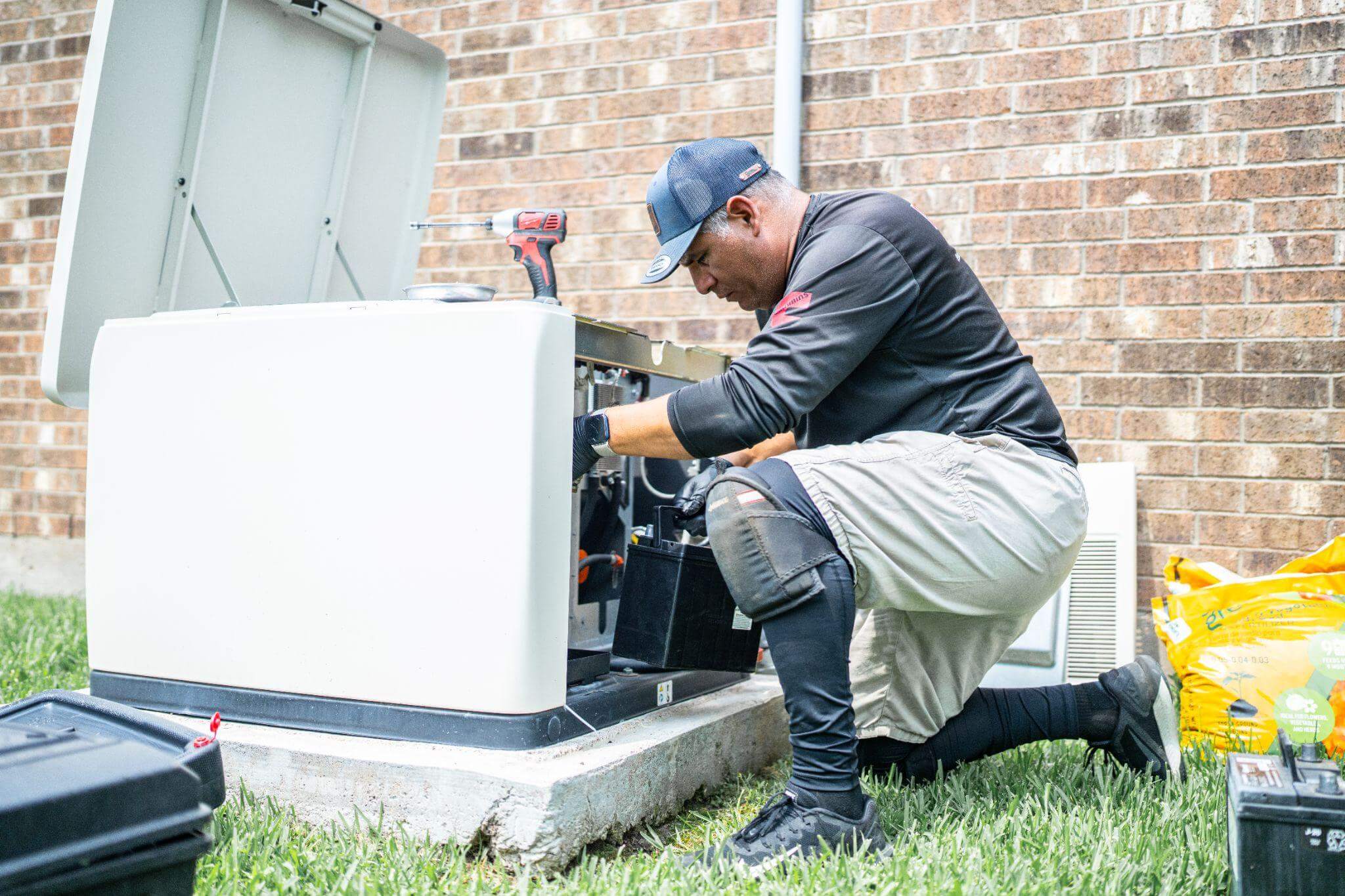Are you doing a siding project?
Modernize can pair you with three to four pros in your area, so you can compare options and save time and money.
Vinyl siding is a popular choice for home exteriors. Many homeowners prefer it over brick or wood because it is affordable and easy to maintain. With a power washer or hose and basic household cleaning products, you can keep your vinyl siding looking new year after year. However, dirt, grime, and stains will occasionally appear. To help you maintain your siding’s appearance, we’ve compiled a few useful spot-cleaning tips.

General Cleaning Tips
Thankfully, regular maintenance of your vinyl siding is fairly straightforward. A garden hose or pressure washer and a soft-bristled brush will clear away cobwebs, dirt, and debris on most areas of your siding.
If you opt for a pressure washer, most professionals recommend using it on the lowest setting to prevent damage to the siding materials. It’s also a good idea to check with your siding manufacturer since some experts advise against pressure washing siding. Finally, angle your pressure washer directly at the side of the house rather than in an upward direction—angling can potentially push dirt and debris up behind the siding slats rather than down and off the wall.

Homeowners who like visual instructions for cleaning jobs will appreciate this vinyl siding cleaning video. In addition to demonstrating good practice for cleaning, it offers great tips such as switching your exterior power off, covering exterior outlets and lights, closing windows and doors, and laying down plastic sheets for protecting brickwork and plants or landscaping.
Mold and Mildew Spots
Over time and through repeated changes in weather, vinyl siding will attract and develop mold or mildew spots—especially in north-facing and other shaded areas. The Vinyl Siding Institute (yes, there is such an organization) offers some helpful and specific tips for dealing with stubborn moldy spots on your siding.
Store-bought cleaners such as Windex will usually do the job for these kinds of spots, but if you want to make your chemical-free solution, you can use a natural mixture of vinegar and water. If neither of these options works, try making your concoction from other commonly found household cleaners. This is what the professionals from the Vinyl Siding Institute and Bob Vila recommend:
1/3 cup powdered laundry detergent
2/3 cup powdered household cleaner
Find the Right Contractor for Your Siding Project
Whether you’re ready to begin your project now or need some expert advice, our network of contractors are here to help. With a few simple questions, we’ll find the best local professionals for you
1-quart liquid laundry bleach
1 gallon of water
For best results, use a cloth or soft-bristled brush and start from the bottom so your cleaning solution doesn’t leave streaks or just drip off the side of the house.
Mulch and Dirt Spots
If you notice lots of tiny black or dark brown spots developing on your siding above a landscaped area of your yard (as seen below), it is most likely artillery—otherwise known as shotgun—fungus. Artillery fungus is a wood-dwelling fungus commonly found in mulch.

Getting rid of artillery fungus is slightly more complicated than the basic cleaning regimen for vinyl siding and will require significantly more effort than a regular scrub-down. Most experts recommend using a mixture of cleaning products (as above) and good old-fashioned elbow grease. Check out this post for in-depth cleaning instructions and product recommendations.
If you want to prevent further artillery fungus growth, it’s best to choose non-wood-based mulches, compost, or stone for your beds instead of standard wood chips.
Safety Tips for Cleaning Vinyl Siding
Before you begin, follow these safety tips to protect yourself and your home.
- If you’re using store-bought cleaners, read the instructions carefully. Test the product on a hidden area first to ensure it doesn’t damage the surface.
- Always rinse off cleaning products thoroughly to prevent streaks or damage to your siding and landscaping.
- Avoid harsh materials like steel wool, Brillo pads, or corrosive products such as undiluted bleach or nail polish remover. These can harm your siding and the areas around it.
- Wear safety gear like goggles, gloves, and masks, especially if your cleaning products produce strong fumes.
- Use ladders carefully. Ask a friend or family member to assist you if needed.
- Keep children and pets away from the work area while cleaning.
By following these steps, you’ll keep your cleaning process safe and stress-free.
Find the Right Contractor for Your Siding Project
Whether you’re ready to begin your project now or need some expert advice, our network of contractors are here to help. With a few simple questions, we’ll find the best local professionals for you
Reviews from Real Homeowners
Welcome to Homeowner Resources! We are the Modernize blog. Modernize pairs more than 3 million homeowners a year with pre-vetted contractors in their area. This blog started because we believe homeowners should know everything about their homes, from how their HVAC works to which front door colors they might love. On Homeowner Resources, you can find information on every part of your home, right down to how you can negotiate with contractors to get the best price. Here's more about the blog.
Need a contractor? Learn more about how Modernize finds the right pro for you.


